*See also: Live, Learn, Dance – Biographies and Live, Learn, Dance – The Language Experience Approach
*This post contains affiliate links. If you purchase an item using one, I will earn a small commission at no additional cost to you.
Dancing children have it tough – in addition to regular kids’ stuff (family relationships, friends, academics, chores, etc.), they endure additional physical, mental, and emotional strain nearly every day when they’re in dance class. You may very well know kids who have dropped out of dance because the burden was more than they could bear (a common time for this seems to be when they enter middle or high school, as the load becomes too great). It’s easy for a parent to feel desperate, but there is something we can do: help them develop lifelong habits that will help them to succeed now and in the future.
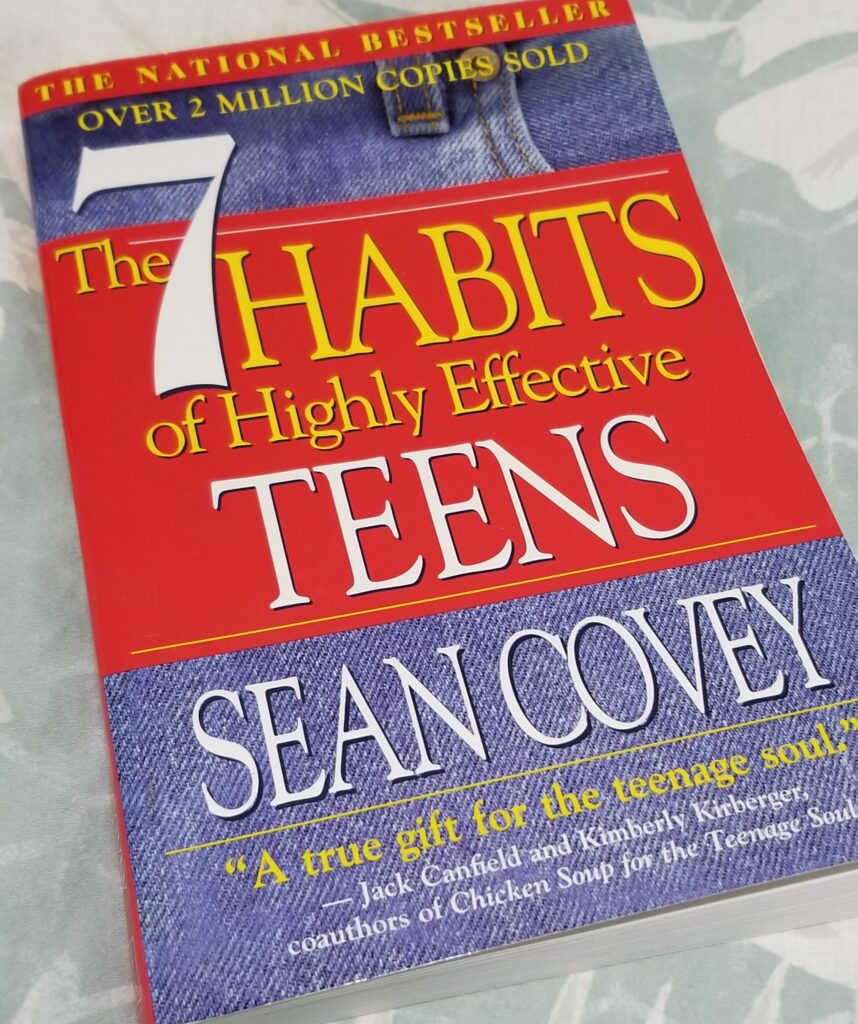
The 7 Habits of Highly Effective Teens by Sean Covey (son of the renowned Stephen Covey) is a straightforward, easy-to-read guidebook for developing such habits. This is still a #1 best seller on Amazon, even though the copyright date of the book is 1998! It includes seven (I hope I’m not giving too much away here) suggestions for how teens can adopt principle-based philosophies that can guide them through the roughest of seas. It is peppered with helpful, enlightening anecdotes to keep it interesting while illustrating the point being made. Each chapter ends with “baby steps” (I love the reference to the quirky movie, “What About Bob?”) for your children to try so that they can more begin to integrate the habits into their lives.
As I read through the book, it struck me how a busy dancer could benefit from adopting these habits as their own. That is why I’m writing this blog – this book can be a wonderful addition to your teen’s library, and taking the habits for a “test drive” has the potential to be life-changing. Just to be clear, I’m not writing an exhaustive review; there’s just too much good stuff to distill from the pages, so I wouldn’t do it justice if I claimed to be writing a thorough piece. It’s a really worthwhile investment, and has a great deal to offer to adults as well.
To embed the learning more deeply, encourage your teen to keep a journal of their reactions, how they (as dancers) can actively apply the lessons, or how it went when they tried one of the “baby steps” on their own.
If your teen has a friend (or friends) that is willing to read along and share, they could form a casual book club to discuss each habit. Artistically-inclined teens could create a collage of visual representations of the ideas in the book, or create a vision board that aligns with his/her personal goals. If your child needs structure, you might consider purchasing the companion workbook (A Self-Guided Workbook for Highly Effective Teens).
Principle-Centered
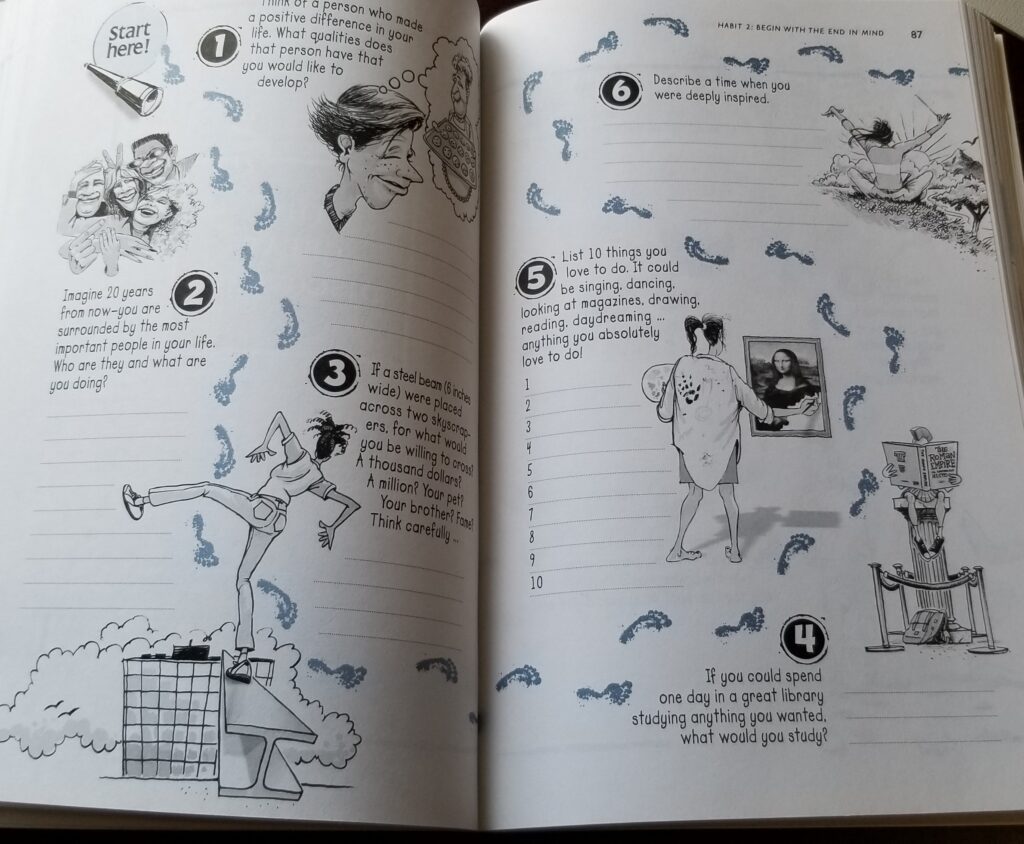
The book begins by explaining that in life, we often are driven by our “centers.” If you are stuff-centered, for example, you derive most of your personal satisfaction from obtaining material things. Covey discusses the pitfalls of centering one’s life on possessions, friendships, romantic partners, school, parents, work, etc. Rather, he endorses adopting a principle-based paradigm. When he discusses honesty, hard work, etc., he successfully explains how basing your perspective on these positive principles can help you stay focused on aspects of your life that are productive, effective, life-affirming, and satisfying.
He also introduces the concept of a “personal bank account,” and how the choices we make either enrich (a deposit) or deplete (a withdrawal) our “balance.” These ideas set the stage for the rest of the book, which delves into each of the seven habits more deeply. Since you can easily find the seven habits by doing a quick Google search anyway, here they are:
Habit 1 – Be Proactive
Covey artfully explains how being proactive, rather than reactive, can help everyone handle all types of situations more effectively. I must admit, I blushed a little when I read his example of an angry outburst one might have after getting cut off by another vehicle on the road (it may or may not have sounded like something I would say). There will be times in a dancer’s life that he/she will not be pleased with a decision (i.e., not getting that coveted role she auditioned for); learning to deal with it proactively is more effective than having a destructive knee-jerk reaction.
Habit 2 – Begin with the End in Mind
Covey endorses thinking beyond the present moment so that your life path follows the direction you want it to. He supports this theory with two reasons: “The first is that you are at a critical crossroads in your life, and the paths you choose now can affect you forever. The second is that if you don’t decide your own future, someone else will do it for you” (p. 76). As dancers grow, they should start thinking about where they want their passion to take them as they become adults; this will help to inform their choices as they progress through their dance education.
Habit 3 – Put First Things First
In this chapter, Covey explains that when you “pack” your life like you would pack a suitcase (with a measure of planning and prioritizing), you will have more time to pursue whatever you want. Habit 3 is the habit of willpower (okay, maybe I took copious notes while reading this chapter, don’t judge) and making difficult choices. Heaven knows that dancers spend countless hours in the studio, so they need to organize their lives to make the most of their free time. Does your dancer complain that they have no time to get everything done? Then this chapter is a must-read!
Habit 4 – Think Win-Win

The foundation for interpersonal relationships, the win-win philosophy casts us all as equals (no one is more or less important than anyone else, nor do they need to be). It’s the belief that everyone can benefit (or “win”) with the right approach. You don’t need to beat others up to boost your own self-worth, but nor should you allow yourself to be taken advantage of to elevate others. The dark side of competition dance often includes rivalries and jealousy; learning to approach these events from a different perspective can help your child to find the value of his/her participation, even if the adjudications didn’t end up the way he/she had hoped.
Habit 5 – Seek First to Understand, Then to be Understood
Have you ever heard a variation of the phrase “You have two ears and one mouth so you can listen twice as much as you speak”? If so, that’s a central principle in this chapter. Communication is a lost art (especially in today’s charged political climate). But rather than truly listen to others, we often want to swoop in and solve their problems for them.
I had a moment of painful self-assessment when I read through the five poor listening styles (spacing out, pretend listening, selective listening, world listening, and self-centered listening). This self-improvement stuff is tough! In class, so many younger, impulsive dancers want to just “do” the combo before hearing their instructor’s thoughts (what the motivation for the piece is, for example). Truly listening to and thinking about the teacher’s words can turn a passable performance into an impressive one.
Habit 6 – Synergize
Your teen might not be familiar with this term; Covey defines it this way: “…[S]ynergy is achieved when two or more people work together to create a better solution than either could alone” (p. 182). Rather than a response being mine or yours, it can be ours with the right approach. He helpfully included an action plan to create synergistic solutions to problems or opportunities. During class, teachers may pair up dancers to complete a task (choreographing an 8-count, for example); learning to work in concert with one another will help both participants gain more from the experience.
Habit 7 – Sharpen the Saw
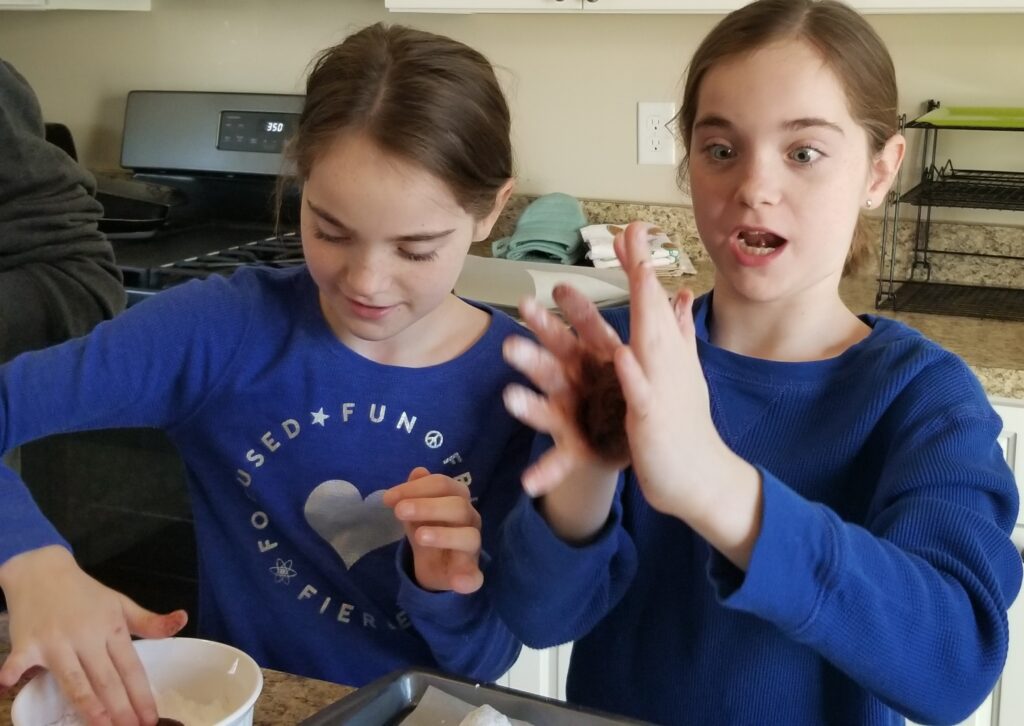
I love the analogy he uses for taking the time to renew our souls. We moms have heard plenty of times that we need to take care of ourselves before we can effectively take care of others (those little minions we created), but it is equally important for our children to identify and participate in activities that will re-energize their spirits. With all of the hours they spend in training, it’s important that dancers dedicate some time to their outside interests to become more well-rounded, adaptive young people.
Wrapping It Up
The book ends with the inspiring “go forth and move mountains” directive (personally, I think our teens need to hear this more than they do). As a word of caution, you should know that this book does touch on some mature content (drugs, sex, and other topics that turn our insides to jelly when we think about discussing them with our kids). Amazon has the 7 Habits of Happy Kids book that would be more appropriate for children; as always, use your parental judgment to make the decision of which to purchase.
Work hard, have fun! – Danielle
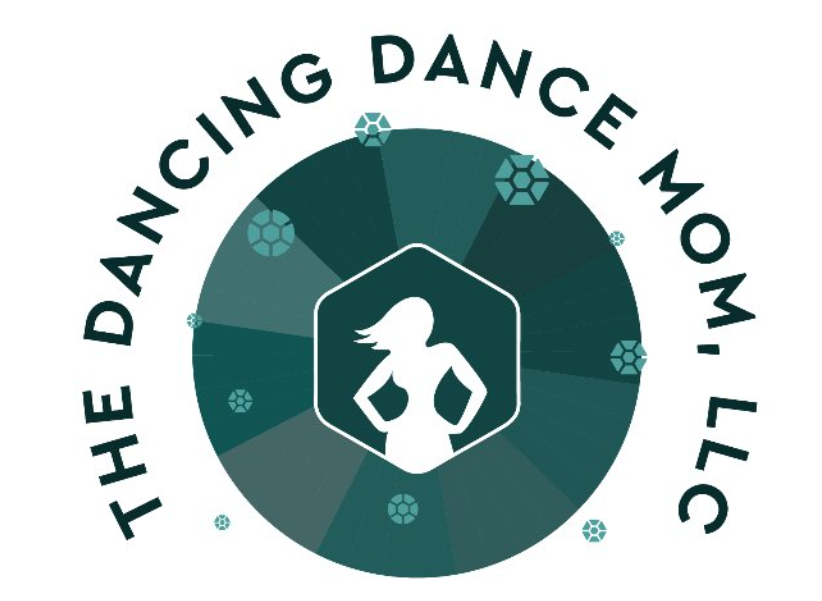
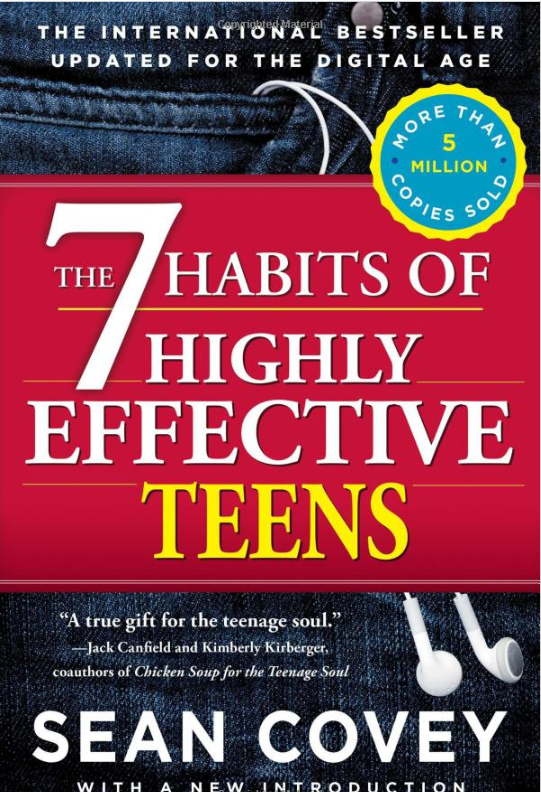

I have not heard of this book, though I am past the age of parenting at this point. However, I have read the books that his father wrote – Stephen Covey. They make good sense, seem well organized and speak directly on leadership (that was his focus). I would suspect that his son carried on in the same approach. I bet its an interesting read and I think nowadays, parents have to be on-point for all the things that our children are faced with. Thanks for sharing this.
You’re welcome! Sean’s book is how you described Stephen’s (well organized and direct). Thanks so much!
I didn’t know they had a teen version of this book. I have read 7 habits of highly effective people a couple of times and loved what I was able to take away from it. This will be great for when my kids get older!
This book seems really helpful! Thankfully I was extremely motivated and hardworking all through school, but I can still think of some instances where this book would have been handy!
This is a great idea! I would love my 2 bonus kids to read this book. Now.. the trick is to get them to want to read it!
I’m thinking of ordering the “adult” version by Sean Covey’s father so that I can read it while I encourage my son to read the teen version so we can compare notes.
Great review! Sean’s father did a great job on his book, and I love you idea in your reply about how to get the kids to read and compare the 2 books, because the kids could learn from both!
These are great tips, even for adults too. I like the win-win tip the best.
This book sounds like a great read! It’s been a while since I have had young teens in the house (Mr Rush is now 21), and Miss Sunshine turns 13 in a couple months. May be time for a refresher!
Thanks for sharing! I think these habits would be helpful for adults too(;
I never heard of this book but when my neices are of age I’ll surely pass this great information to my sister!
I will explore this for our son. I think it would be very helpful. I am already a strong believer in being proactive.
Begin with the end in mind is exactly how teachers build their curricula, and it makes sense to help in decision making for teens as well as adults! Also that resonates most with me as a former teacher!
“Seek first to understand, then to be understood.” Wow! What a lost art in our society. So important to teach our kids.
Awesome read! Teens can definitely benefit from these habits, so can a lot of adults..
I love the ideas for this book! They are great for people of all ages but I think it’s great for teens to learn them. Gives them a better perspective on becoming productive adults.
Great post and such good information! I read the adult version of the book, and found the section on being proactive instead of reactive to be of so much value! My kids were involved in competitive figure skating and that is also a challenging lifestyle. Understanding this concepts as a parent, or teen makes such a huge difference.
What a wonderful book! I read his dad’s book a long time ago but had no idea this one was out there. His advice is spot on and so incredibly necessary for young people (all of us, really) especially in the times we are in. Thank you for your excellent review. Now if I could only get my teen to read it! 😊
Love that you applied these principals to dance and great reminder that we can all apply these in so many areas! Great inspo!
I didn’t know there was a teen version, but I love Sean Covey.
Thanks for that inside look at the book. I love the interactive nature of the book. Probably would have kept my attention longer than the popular adult version. 🙂 I’ll have to check it out.
These are great tips. But this is why Stephen Covey is timeless. Perfect for teens too!
I love “begin with the end in mind!” That is seriously so helpful for me when goal setting.
I read the Chicken Noodle Soup for the Soul books growing up, and am looking forward to looking into this new take. Many of these lessons are very useful to adults too!
I want to buy this book for my daughter!
The adult version of this book was wildly popular when I was close to College graduation and it provided organization to my brain!= then!
I’ve read Stephen’s books and love that there is a version now available for teens!
I never thought about the pressure that teens deal with, great tips!
This is a great book for teenagers! I have read the adult version by his father and did not realize there was a teenager or even a kid version. I will have to check them out.
I love that they’re making such great personal development products for teens and kids! Thanks for sharing this!
Wow, I did not know he modified this for teens. I’ve read his 7 Habits, how great is it to get them off to a good start.
Habit 5 is so important!! We have become such a reactive society, we often speak out before fully understanding what the underlying issues are. The more we listen, the more we understand and can speak more knowledgeably. Not only is this a good habit, it makes us sound more credible because we can back up what we are saying!